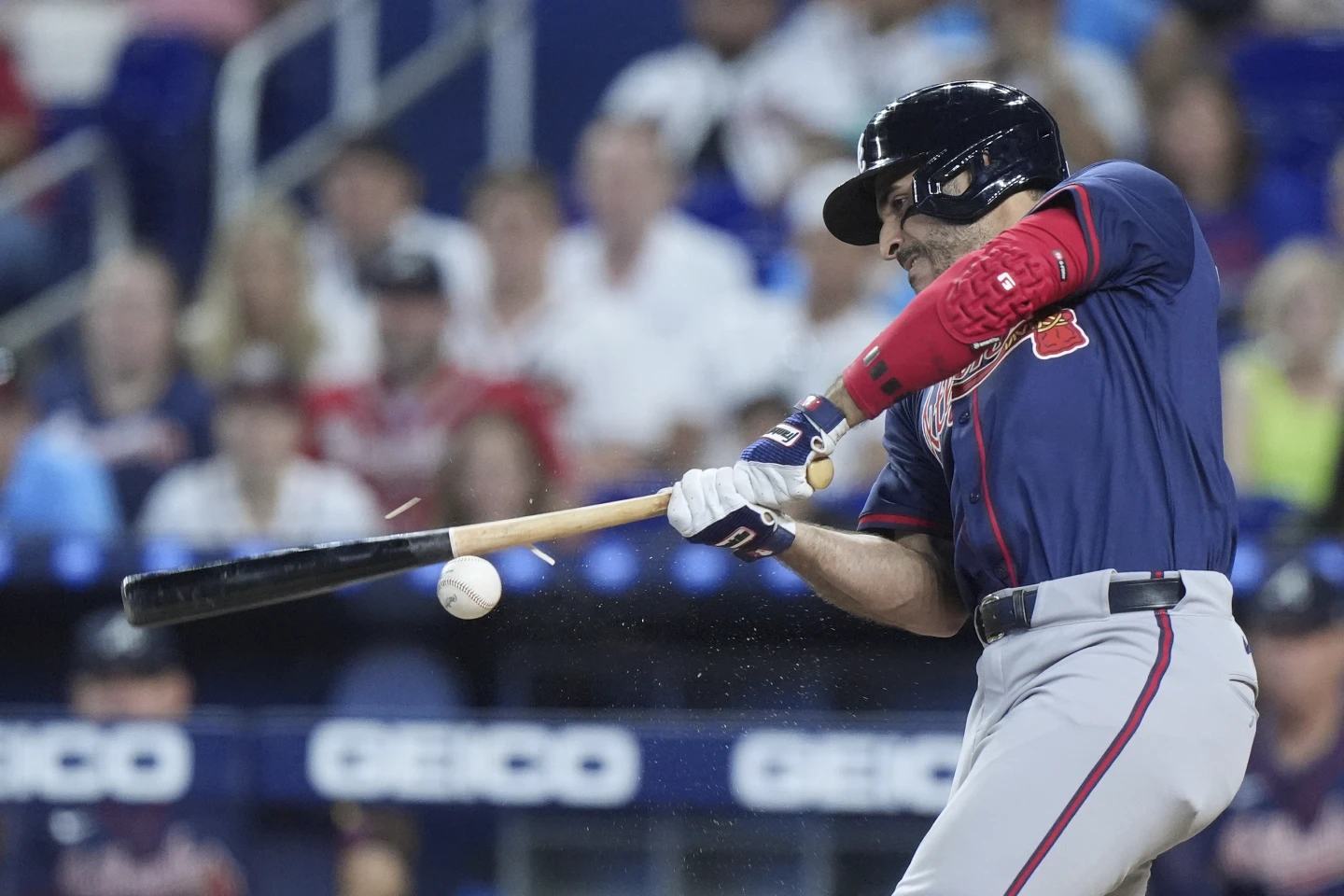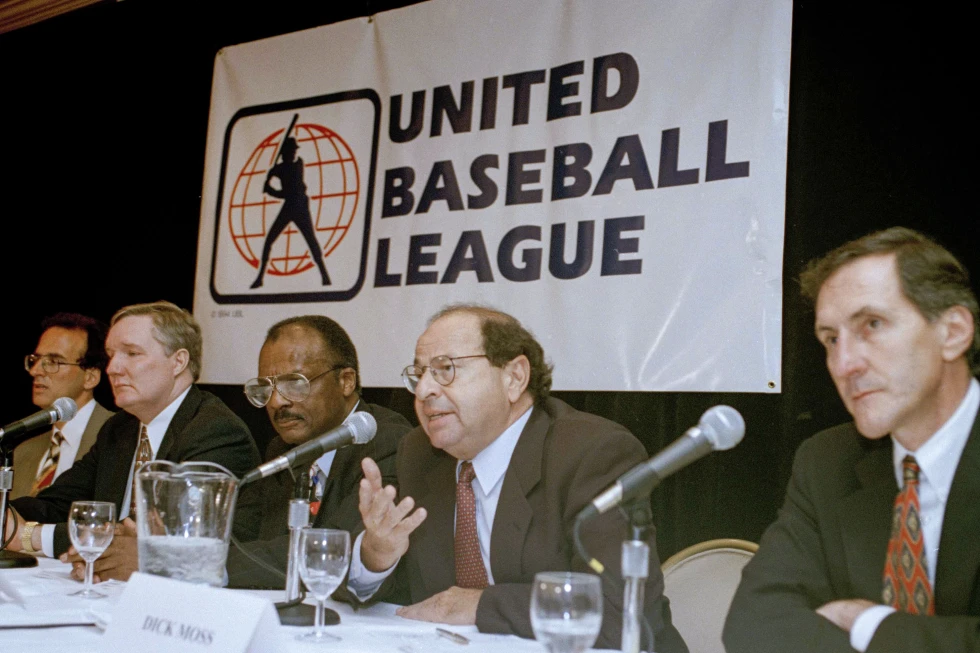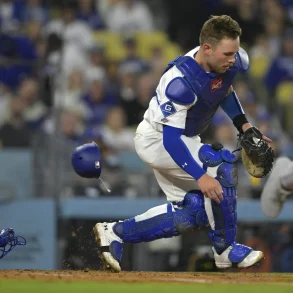Dick Moss, the lawyer who won the arbitration case that established free agency for baseball players and changed how professional athletes are paid, has passed away at the age of 93.
Moss died on Saturday at an assisted-living facility in Santa Monica, California, according to the Major League Baseball Players Association. He had been in poor health for several years.
He was hired by union executive director Marvin Miller as general counsel in 1967. Moss argued the 1975 case involving pitchers Andy Messersmith and Dave McNally, which led to arbitrator Peter Seitz ruling against the reserve clause.
This clause allowed teams to unilaterally renew contracts for one year and had been included in contracts since 1878, letting teams control players indefinitely.
On December 23, 1975, Seitz decided that the clause allowed only a single one-year renewal. This ruling affected all sports in North America and resulted in free agency in baseball.

“A titan of the industry. He impacted the industry at that time like few others,” said David Cone, a pitcher who was part of the union leadership and a client of Moss.
“A bit eccentric, but very fun loving, just a gregarious personality, great guy to be around. Life of the party, a great guy to have a drink with.”
At the time of Seitz’s decision, the average salary for Major League Baseball players was just under $45,000. It increased to $76,000 in 1977 and by 2023, it reached $4.5 million, a 1,000-fold rise.
MLB’s revenues grew at a slower pace, going from $163 million in 1975 to more than $11 billion in 2023, a 70-fold increase.
“The difference between winning and losing was billions and billions of dollars, maybe tens of billions of dollars,” Moss said at a 25th anniversary party he hosted in December 2000.
The improvements for baseball players inspired similar changes in other sports, with unions achieving better free agency rights in the NBA in 1976 and the NFL in 1993.
Richard Maurice Moss III was born in Pittsburgh on July 30, 1931. He earned degrees from the University of Pittsburgh and Harvard Law School.
After spending two years in the Army, Moss worked at a law firm in Pittsburgh, then became a Pennsylvania assistant attorney general.

In 1963, he joined the United Steelworkers as an associate general counsel, where Marvin Miller was an assistant to the union president, David McDonald.
Miller was hired by the baseball union in 1966, and Moss joined him six months later. As Miller organized the players into a strong group, Moss negotiated the first collective bargaining agreement in 1968, increasing the minimum salary from $6,000 to $10,000.
The agreement in 1970 added grievance arbitration, and the deal in 1973 established salary arbitration.
“Marvin was really the perfect man for that time,” Moss told The Associated Press in 1991. “The players trusted him. He instilled confidence and respect in the players, and he was something of a father figure to them.”
Players showed their determination during strikes in 1972 and 1973, as well as a lockout in 1976. A lawsuit by Curt Flood aimed at ending baseball’s antitrust exemption was unsuccessful in the U.S. Supreme Court in 1972.
The first major breakthrough came in December 1974 when Seitz ruled in an arbitration case that the Oakland Athletics had violated Catfish Hunter’s contract by not making a $50,000 payment into a long-term annuity fund.

He declared Hunter a free agent, and the New York Yankees signed him for $3.2 million over five years, showing what players could earn without restrictions.
“Dick managed to win that case establishing something novel for baseball, the first real free agent who didn’t get there by being released,” said Donald Fehr, who worked with Miller and Moss and later led the players’ association from 1983 to 2009. “The magnitude of the restraint was demonstrated.”
When Messersmith and McNally played seasons without contracts, the union filed complaints, and Moss represented them in front of Seitz on November 21 and 24 and December 1, 1975. Seitz made his decision on December 23, stating, “there is no contractual bond between these players and the Los Angeles and the Montreal clubs, respectively.
Absent such a contract, their clubs had no right or power … to reserve their services for their exclusive use for any period beyond the ‘renewal year’ in the contracts which these players had heretofore signed.”

Seitz’s ruling was supported by U.S. District Judge John W. Oliver in Kansas City, Missouri, and by the 8th U.S. Circuit Court of Appeals, where Moss argued on behalf of the union.
Free agency rules were established in the labor contract of July 1976, and the first group of free agents to make big money included future Hall of Famers Reggie Jackson and Rollie Fingers.
Miller taught players how to achieve their goals, while Moss developed the legal strategies.
“Working in tandem was exactly what built the solid foundation,” said former pitcher Steve Rogers, a Moss client and longtime union official. “None of what is happening today exists without the solid foundation.”
Moss left the union in July 1977 to become an agent, representing future Hall of Famers like Nolan Ryan, Jack Morris, and Gary Carter.
He negotiated Ryan’s contract for the first $1 million annual salary in 1979 and argued the case that secured Fernando Valenzuela’s first $1 million salary in arbitration in 1982.

In 1987, he helped reveal owners’ collusive practices by providing the Chicago Cubs with a blank contract for Andre Dawson, which the team filled in with a $500,000 base salary plus bonuses.
Owners lost three complaints and reached a settlement with the union in 1990 for $280 million.
In 1992, he helped argue the case that led arbitrator George Nicolau to lift Steve Howe’s lifetime ban, which was Howe’s seventh suspension for substance abuse. In both 1989 and 1994, he attempted to organize a new league but never managed to get teams on the field.
He is survived by his third wife, Carol Freis, whom he married in 1980, and a daughter from his second marriage, Nancy Moss Ephron, who is the daughter of Rolinda. Another daughter from his second marriage, Betsy, passed away before him.







